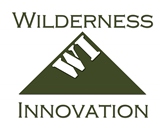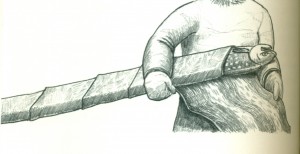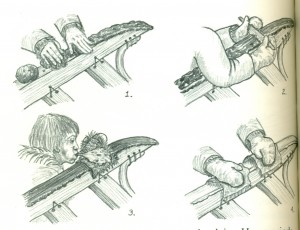Much of Eskimo family and social life revolved around making things needed for everyday life. Unlike our modern society, which is primarily entertainment centered.
One of the dangers of our civilization is that individuals today generally know little of what is needed for survival, for preservation of life. The Eskimo, or actually Inuit and other peoples, lived and thrived in a world that would seem impossible by todays standards. While we watch TV after our day of work, Eskimo’s sat together with family or many times several families might get together, and they would talk, tell stories, jokes, hunting advice, etc. while their hands would be busy making tools, repairing leads, making clothing. Children learned by observation.
Think about it Eskimos lived in a place that afforded no permanent shelter, they had no herds, did not farm or build much of any settlements, all of which we would consider essential to everyday life. And yet they survived and existed for hundreds of years. When discovered by early European explorers they were found to be a healthy, intelligent people, they were noted to have healthy teeth, and little illness.
How did the Eskimo live in one of the most hostile of environments on Earth? They did what we should all do, particularly when faced with a survival scenario, they looked around them and made use of what nature provided. I have always maintained that when our environment presents us with a new difficult scene, there are always some beneficial advantages gained as well. Let’s look at a few related to winter, from the Eskimo life.
In a land of little wood, these people used what they had. Although the bitter cold was a problem it also made possible a solution. Many times for runners on sleighs or even structural beams, they would take fish and layer them on some seal skins, which would then be rolled or folded over and left to freeze. Once frozen solid they had something they could use like a piece of wood. In a land without steel, they made the runners for the sled slick and durable by taking mud and moss and spreading it on the bottom of the runners, then it would be smoothed before freezing. Finally to make the runner super low friction, they would then take water which they kept in a bag inside their coats and coat the mud mixture with several layers, after this froze solid, they were set to travel. with super slick runners, all without wood or steel.
Having no wood in any large quantity to use for fuel, they found that the fat or blubber on seals and whales could be made into an oil and burned. It burned very cleanly. This seal oil was placed in a long narrow stone platter, a piece of moss was placed at the edge or lip to act as a wick and ignited. The flame provided light and heat inside the igloo or hut. Above this they would suspend a soapstone pot in which they would cook their meals. Near the ceiling they would construct a shelf, similar to a hammock, any damp clothing would be placed here overnight to dry out.
When we are out in the winter, camping, snowshoeing, skiing, snowmobiling, or surviving, we should remember the Eskimo, look about us and see what resources we can make use of. Think of unconventional things like the Eskimo did. Make use of the cold, make use of the snow, make use of the ice or freezing effects of the cold.
In our upcoming Winter Rendezvous we are snowshoeing in about a mile and a half. We will set up camp in the snow. Everyone will learn to make the Wilderness Mattress, and to make simple easy shelter using the materials around us. It will be a very fun experience for all.
Until next time, “Simplifying Survival” this is Perry Peacock
Images shown, from the book “The Igloo”





